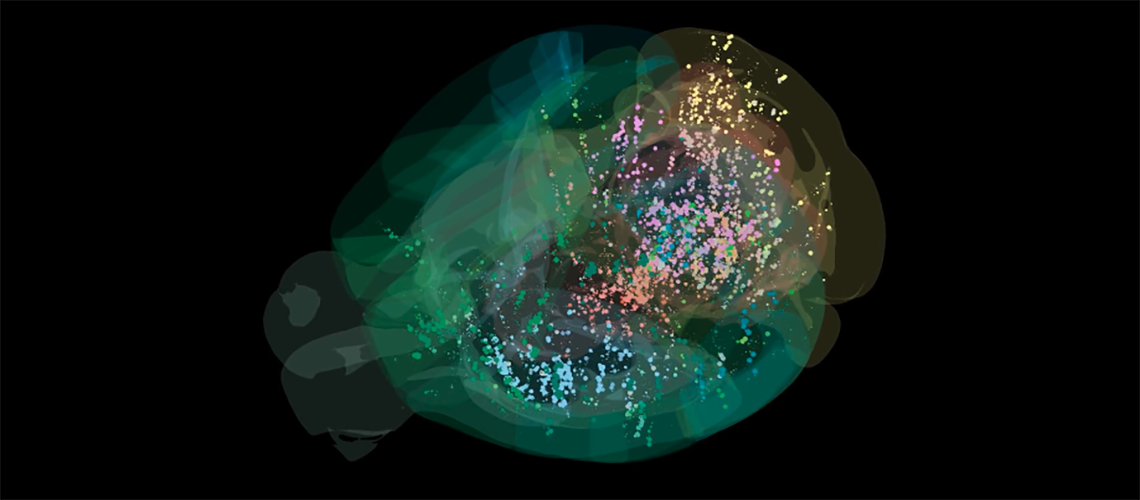Follow us on Google News (click on ☆)
Thanks to unprecedented cell-by-cell resolution, this brain map challenges the traditional hierarchical view of information processing in the brain. It demonstrates that the brain is capable of coordinating many regions to simultaneously process different external stimuli, but also of making predictions based on prior experiences in order to make a decision. These findings are the subject of two papers published in Nature.

Firing rates of neurons across the whole brain during an average trial of the decision-making task, conducted as part of the IBL study.
© Dan Birman. IBL
Officially launched in 2017, the IBL introduced a new model of collaboration in neuroscience that pools a standardized set of tools and information management across multiple laboratories, thereby ensuring data reproducibility. "Thanks to this large-scale collaboration, 21 laboratories worked together on the same experimental model to record the individual activity of more than 650,000 neurons distributed across 279 brain areas, representing 95% of the mouse brain volume," explains Alexandre Pouget, full professor in the Department of Basic Neurosciences at the UNIGE Faculty of Medicine and co-founder of IBL.
There is constant communication between different areas of the brain throughout the entire decision-making process.
A brain lit up like a Christmas tree
Scientists used Neuropixels probes, a special type of electrode, to simultaneously record neural activity and measure the brain activity of mice performing a decision-making task. Placed in front of a screen, they had to move a small wheel left or right, toward a light that appeared sporadically, to receive a reward. But sometimes, the light was so faint that the animal had to guess which way to turn the wheel.
"The mouse then uses the frequency with which the light previously appeared on the left or right to make guesses, which allows us to study how prediction based on prior experience influences perception and decision-making," says Alexandre Pouget. "And we found that when it is in the process of deciding, the entire brain lights up like a Christmas tree!"
From these experiments emerged an extremely detailed mapping of the brain during decision-making, from the very beginning of the process until the reward is obtained.
Two major discoveries
The research teams then made two major discoveries. First, decision-making signals are distributed throughout the brain. They are not localized only in certain specific regions, contrary to the commonly accepted model of a hierarchical decision tree. "There is constant communication between different areas of the brain throughout the entire decision-making process," explains the researcher.
Furthermore, prior expectations—that is, what one thinks is likely to happen based on previous experiences—are encoded throughout the entire brain, and not only in the areas responsible for cognition. The parts of the brain responsible for processing sensory information or those controlling actions also play a central role in the brain's ability to anticipate and thus guide behavioral responses.
These discoveries are important for understanding certain neuropsychiatric disorders such as schizophrenia and autism, where the management of anticipation and reward appears to be dysfunctional.
"Traditionally, neuroscience studies brain regions in isolation. Whole-brain recording now gives us the opportunity to understand how all the pieces fit together," emphasizes Kenneth Harris, professor of quantitative neuroscience at UCL and one of the key members of the IBL.
Acting for open science
One of the principles governing the IBL is a commitment to democratize and accelerate science, as well as to improve data reproducibility. The brain map published here is available to teams worldwide, who are already using it for numerous research projects.
Furthermore, all data from these studies, as well as the detailed specifications of the tools and protocols used for data collection, are freely accessible to the scientific community. More details on the IBL website in the sections: Data, Tools, Protocols.